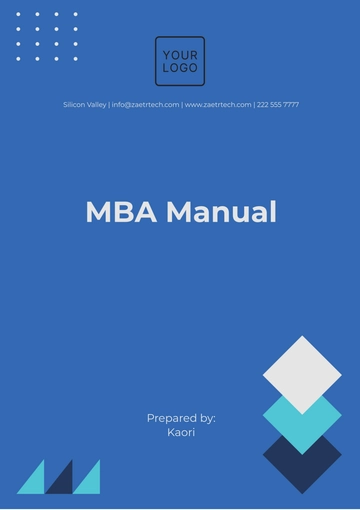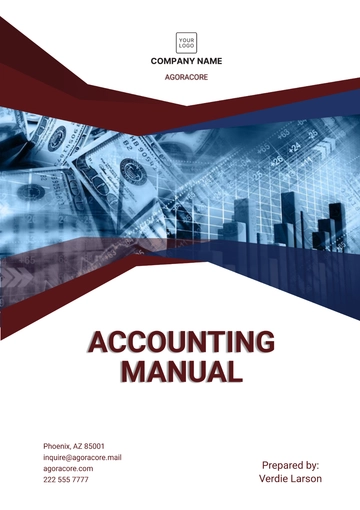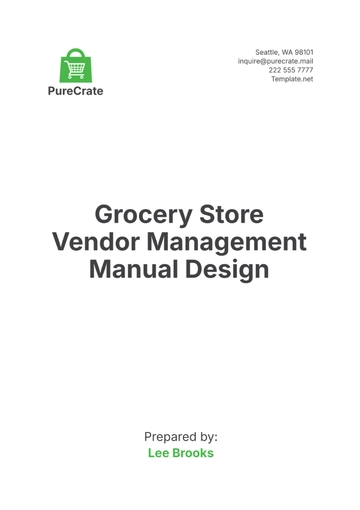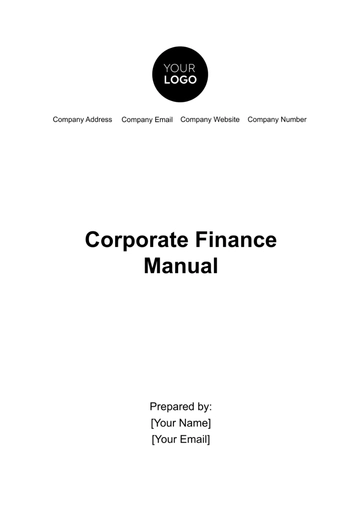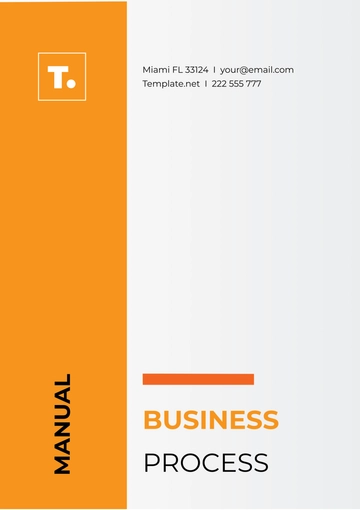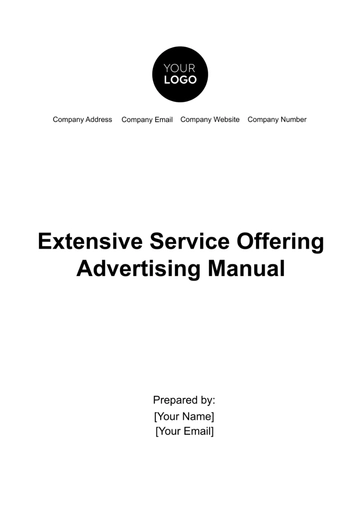Free Advertising Budget Audit Manual

A. Introduction
Purpose and Scope
Purpose: The Advertising Budget Audit Manual is designed to provide comprehensive guidelines and procedures for effectively monitoring, assessing, and optimizing advertising expenditures at [Your Company Name].
Scope: This manual encompasses all aspects of advertising budget management, including budget planning, expense tracking, performance evaluation, and audit processes.
Document Revisions
This section will list any revisions made to the manual, including dates, descriptions of changes, and the names of individuals responsible for revisions.
B. Roles and Responsibilities
Effective management and oversight of advertising budgets are essential for maintaining financial health and achieving marketing objectives. This section outlines the key roles and responsibilities of stakeholders involved in the budgeting process. Clear delineation of duties ensures transparency, accountability, and efficient allocation of resources, ultimately contributing to the success of advertising initiatives.
Role | Responsibilities |
|---|---|
Advertising Budget Manager |
|
Finance Department |
|
Marketing Team |
|
In conclusion, a collaborative approach among stakeholders is paramount for the effective management and audit of advertising budgets. By fulfilling their respective roles and responsibilities diligently, teams can ensure adherence to budgetary guidelines, optimize resource allocation, and enhance the overall efficacy of advertising campaigns. Continuous communication and oversight foster transparency and accountability, laying the foundation for sustained success in marketing endeavors.
C. Budget Planning and Allocation
Annual Advertising Budget
Process: The annual advertising budget is developed in collaboration with the Marketing Team, aligning with organizational goals and market trends. It includes a detailed breakdown of expected expenses for the fiscal year.
Communication: The budget is communicated to all relevant departments to ensure awareness and alignment with budgetary expectations.
Budget Allocation Across Channels
Strategy: Budget allocation across various advertising channels is determined based on campaign objectives, target audience analysis, and historical performance data.
Adjustments: Allocation is periodically reviewed and adjusted to optimize resource utilization and adapt to changing market dynamics.
Contingency Fund
Purpose: A contingency fund is established to address unforeseen circumstances or opportunities that may arise during the budget cycle. A percentage of the total budget is allocated to this fund.
Approval: Access to the contingency fund requires approval based on predefined criteria and a documented justification.
D. Expense Tracking
Expense Categories
Classification: Advertising expenses are categorized into clear and distinct categories such as media buying, creative production, digital advertising, and event sponsorship. This categorization facilitates tracking and analysis.
Tracking Tools and Software
Utilization: Appropriate software and tools are utilized to record and monitor expenses, ensuring real-time visibility and accuracy. Data entry is consistently maintained.
Data Sources
Data Collection: Reliable data sources for expense tracking include invoices, receipts, contracts, financial reports, and expense reports submitted by departments.
E. Expense Authorization and Documentation
Approval Process
Workflow: A standardized approval process is established for obtaining authorization for advertising expenses. Clear workflows and designated approvers are defined.
Thresholds: Different approval thresholds are set based on expense categories and budget allocation limits.
Receipts and Invoices
Mandatory Collection: All receipts and invoices related to advertising expenditures must be collected, reviewed, and retained as part of the documentation process.
Audit Trail: A detailed audit trail is maintained for each expense, including date, vendor, purpose, and approver.
Contracts and Agreements
Documentation: All contracts and agreements with advertising partners and vendors are documented, archived, and made accessible for reference.
Compliance: Contracts must adhere to budgetary guidelines and reflect negotiated terms.
F. Performance Metrics and KPIs
Establishing Key Metrics
Selection: Key performance indicators (KPIs) are established to evaluate the effectiveness of advertising campaigns. Metrics may include return on investment (ROI), click-through rates (CTR), conversion rates, and customer acquisition costs (CAC).
Performance Benchmarking
Comparison: Campaign performance is regularly compared against industry benchmarks, historical data, and competitor benchmarks. Benchmarking informs strategy adjustments.
Data Sources
Data Accessibility: Sources of data for performance metrics are identified and accessible, including website analytics, conversion data, and customer behavior data.
G. Budget Monitoring and Reporting
Regular Monitoring
Frequency: A defined schedule for regular budget monitoring is implemented, with ongoing tracking of actual expenditures against the budget.
Alerts: Any significant deviations from budgeted expenses trigger immediate alerts and further investigation.
Reporting Frequency
Transparency: A reporting frequency is established to ensure that stakeholders receive regular updates on budgetary status, performance against KPIs, and variance analysis.
Customization: Reports are customized to cater to the information needs of various stakeholders.
Variance Analysis
Analysis: Variance analysis is conducted to identify and address discrepancies between budgeted and actual expenses. Insights from variance analysis inform budget optimization strategies.
H. Optimization and Adjustments
Data-Driven Decision-Making
Data Utilization: Data and performance metrics are utilized to make informed decisions about budget reallocation and campaign adjustments.
Alignment: Budget adjustments are aligned with campaign objectives and KPIs.
Reallocation of Funds
Flexibility: A process for reallocating budget resources is established based on campaign performance, emerging opportunities, and shifting priorities.
Prioritization: Reallocation decisions prioritize high-impact initiatives.
Crisis Management
Preparation: Contingency plans are in place to address unexpected crises that may impact the advertising budget, ensuring rapid response and adaptation.
Mitigation: Crisis management strategies include cost reduction measures without compromising campaign effectiveness.
I. Audit Process
Internal Audits
Frequency: Regular internal audits are conducted to ensure compliance with budget guidelines, transparency in expense tracking, and adherence to procedures.
Review: Internal audits are performed by designated personnel, and audit findings are reported to management for action.
External Audits (if applicable)
Engagement: External auditors may be engaged to conduct independent audits of advertising budgets and expenditures to comply with industry standards or regulatory requirements.
Cooperation: Collaboration with external auditors includes providing access to documentation and facilitating audit processes.
Audit Frequency
Determining Frequency: The frequency of audits is determined based on the organization's risk tolerance, regulatory requirements, and best practices.
Special Audits: Special audits may be conducted in response to specific triggers or events.
J. Documentation and Record Keeping
Document Retention Policy
Policy: A document retention policy is established, specifying the retention periods for different types of budget-related documents, including receipts, contracts, and financial records.
Compliance: Adherence to the document retention policy is mandatory.
Data Security
Protection: Robust data security measures are implemented to protect budgetary data, ensuring that access is restricted to authorized personnel.
Training: Employees are trained in data security best practices to prevent data breaches.
Conclusion
The Advertising Budget Audit Manual for [Your Company Name] serves as a comprehensive guide to ensure the effective management of advertising expenditures. By following the procedures outlined in this manual, [Your Company Name] aims to maintain transparency, accountability, and data-driven decision-making in all advertising budget activities. This manual will be periodically reviewed and updated to adapt to evolving industry standards and organizational needs.
- 100% Customizable, free editor
- Access 1 Million+ Templates, photo’s & graphics
- Download or share as a template
- Click and replace photos, graphics, text, backgrounds
- Resize, crop, AI write & more
- Access advanced editor
Ensure fiscal responsibility in advertising with Template.net's Advertising Budget Audit Manual Template. This editable and customizable manual offers a thorough approach to auditing advertising budgets. Essential for maintaining financial transparency, it guides you through evaluating expenditures, ensuring alignment with strategic goals, and identifying areas for efficiency improvement in advertising spending.




